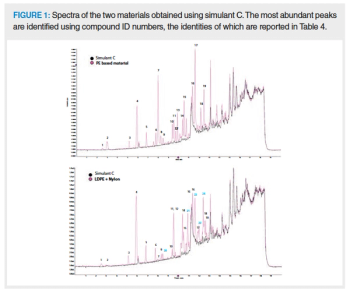
Special Issues
Click the title above to open LCGC Europe Supplement October 2019, Volume 32, Number 10, in an interactive PDF format.

Special Issues
Click the title above to open LCGC Europe Supplement October 2019, Volume 32, Number 10, in an interactive PDF format.

Special Issues
In food analysis, many different biological matrices are investigated containing numerous compounds that can interfere with liquid chromatographyÐmass spectrometry (LC–MS) analysis. To overcome the challenges that arise with these highly complex matrices, the additional separation of analytes and matrix compounds complementing chromatographic separation is becoming more significant. In this article, the potential of IM-MS to increase selectivity and for additional identity confirmation is investigated. An extensive evaluation of IM-MS instruments was performed on a broad test set of food safety contaminants. The tested IM-MS platforms were DMS, TWIMS, low field DTIMS, and TIMS. CCS data were determined using the different instruments, and the ability to separate isomers and compounds of interest from sample matrix in the IM dimension was explored.

Special Issues
This article describes open access sofware for the modelling and prediction of retention times in gas and liquid chromatography. This software provides useful results for food analysis.

Special Issues
This study assesses whether two commonly used plastic packaging materials are safe for use using liquid chromatography (LC) with high-resolution acccurate mass spectrometry (HRAMS) and data‑independent acquisition (DIA).

Special Issues
LCGC Europe interviewed Stefan van Leeuwen from Wageningen Food Safety Research (WFSR), in Wageningen, The Netherlands, on his novel multi-analyte approach to investigate bisphenol A (BPA), bisphenol A diglycidyl ether (BADGE), and their analogues using liquid chromatography–electrospray ionization tandem mass spectrometry (LC–ESI-MS/MS).

Special Issues
Carlos Sales and Joaquin Beltrán from The Research Institute for Pesticides and Water at the University Jaume I, in Castellón, Spain, discuss a novel untargeted gas chromatography–mass spectrometry (GC–MS) method, incorporating dynamic headspace (DHS) with thermal desorption and a novel deconvolution approach, to classify olive oil.